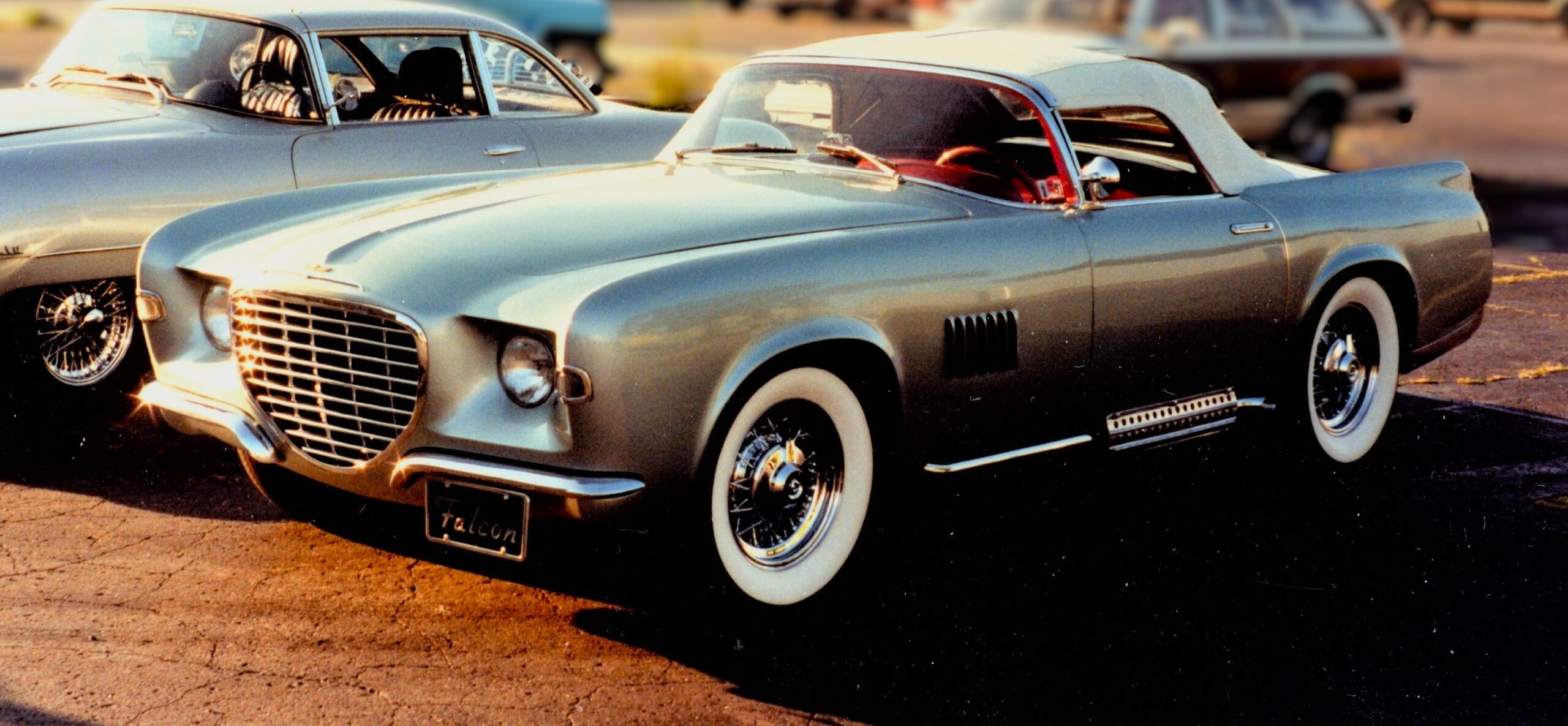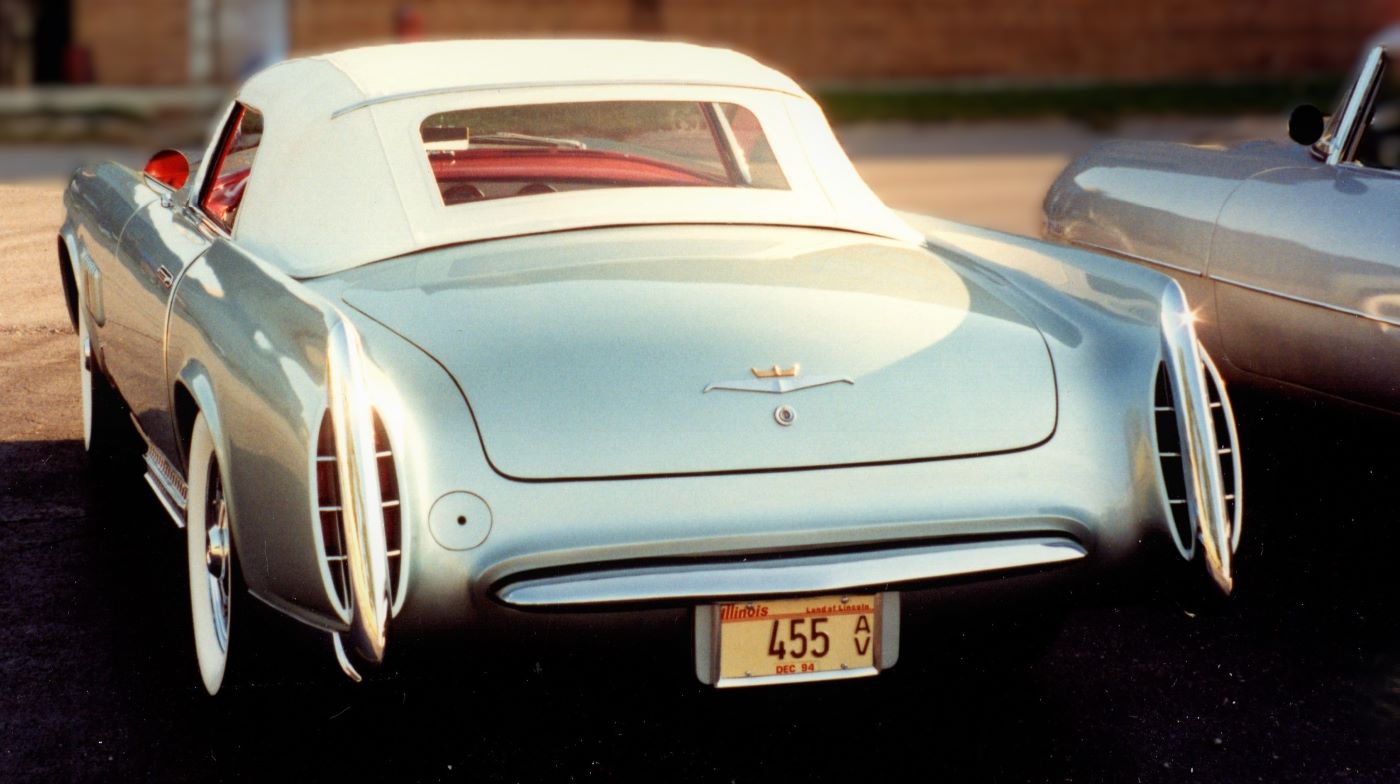
Chrysler Group’s design and engineering leadership in the D-segment may be directly traced to its pioneering development work in the evolving compact car segment of the late 1950s. When a market for small imported cars rapidly developed during that decade, Chrysler sent teams of designers, engineers and marketing people to Europe to study the phenomenon, leading eventually to the company’s investment in Simca and its decision to create an American-built compact car. The development project was code-named “Falcon” after the 1955 Chrysler Falcon two-seat concept car (the name would later be registered by Ford for that company’s first compact). During Chrysler’s “Falcon” project, more than 20 prototypes were built and 57 experimental engines operated for 750 million test miles.
Chrysler design chief Virgil Exner designed the two-seat Chrysler Falcon concept car for the 1955 auto show season. The roadster was close in spirit to the contemporary Chevrolet Corvette and Ford Thunderbird, though the simulated knock-off wheels and external exhaust pipes gave the Falcon a somewhat racier appearance. Chrysler chose not to put the car into production.
The first car built was painted black, and was used by Exner as his personal vehicle. Exner also drove the car in some SCCA events.
- Engine: 331 cu in (5.4 L) FirePower V8 // 276 cu in (4.5 L) FireDome V8
- Transmission: 2-speed PowerFlite automatic



You must be logged in to post a comment.